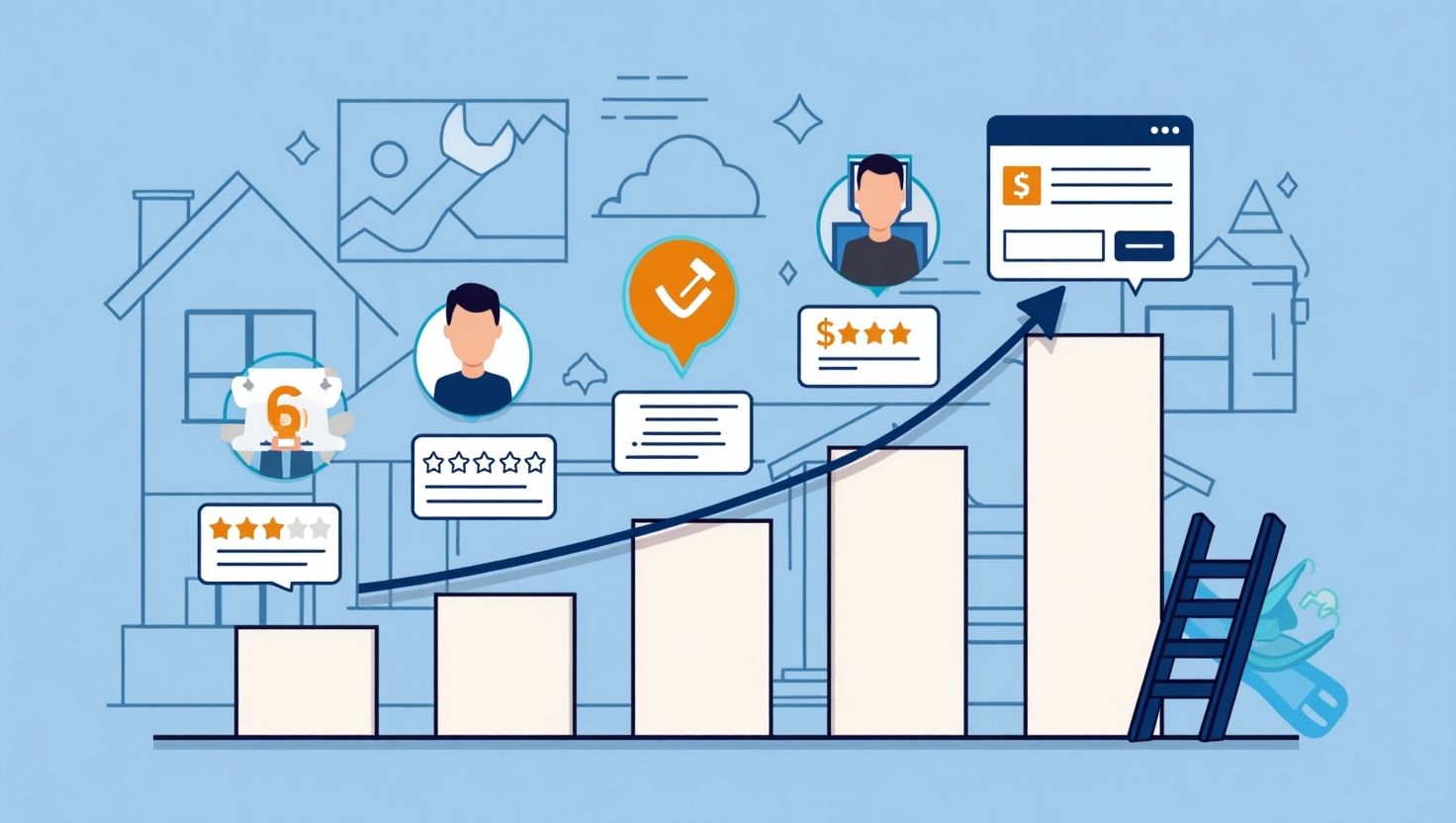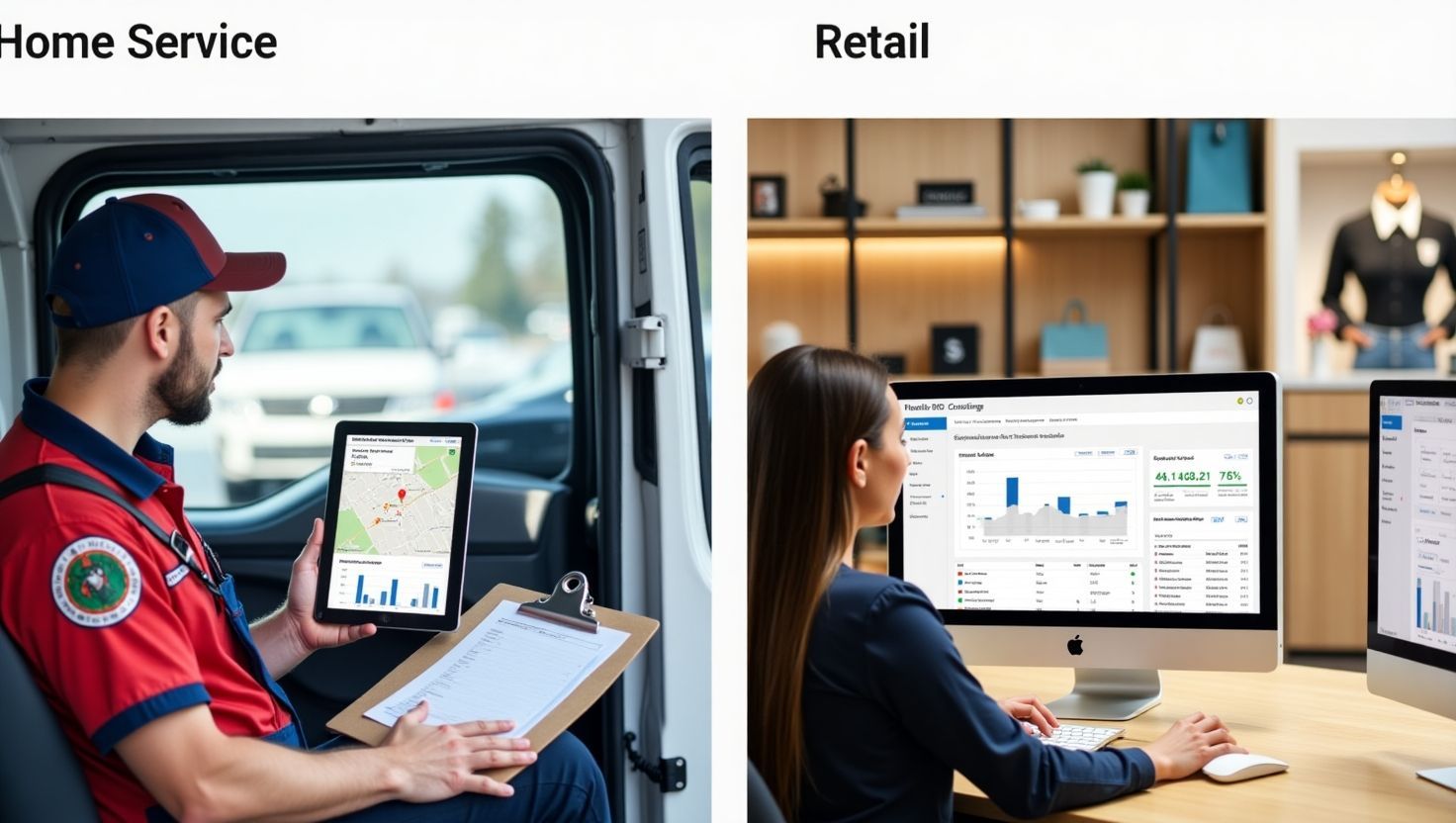Digital Marketing for Home Services: What ROI to Expect in Your First 6 Months
Digital Marketing for Home Services: What ROI to Expect in Your First 6 Months

Home service businesses face intense local competition, but digital marketing offers a clear path to measurable growth. Unlike traditional advertising methods,
digital strategies provide trackable results and scalable solutions that can transform your customer acquisition process.
The first six months of a well-executed digital marketing campaign typically deliver substantial returns for home service companies. While results vary by market and execution quality, most businesses see initial improvements within 30-60 days, with significant Return on Investment (ROI) becoming apparent by month three.
Understanding realistic expectations helps you make informed investment decisions and measure success effectively.
What Counts as ROI in Home Service Marketing?
ROI extends beyond immediate revenue. Smart home service marketing strategy focuses on multiple metrics that indicate growing market presence and customer acquisition.
Trackable metrics include cost per lead, conversion rates from inquiry to booking, phone call volume, and online review generation. Tools like Google Analytics track website behavior, while CallRail monitors phone conversions from marketing campaigns, and Customer Relationship Management (CRM) systems connect initial contact to completed jobs, providing complete ROI visibility.
Revenue remains the ultimate goal, but intermediate metrics predict future growth. A plumber generating 50% more calls in month three, even with similar conversion rates, indicates expanding market reach. These early indicators help optimize campaigns before measuring final revenue impact.
Brand visibility and local search presence also contribute to ROI. When your business appears consistently for relevant searches, customers perceive you as established and trustworthy, directly impacting conversion rates and pricing power.
Month-by-Month Breakdown: Your First 6 Months
Month 1-2: Laying the Foundation
Foundation building generates minimal immediate leads but creates essential infrastructure for future growth. Website optimization ensures mobile functionality, clear calls-to-action, and fast loading speeds. Search engines need time to recognize these improvements.
Claiming and optimizing your Google Business Profile provides immediate local visibility. Complete profiles with accurate hours, services, and contact information help customers find and trust your business. Professional photos and initial reviews establish credibility.
Local SEO for home services such as HVAC, roofing, plumbing, solar sales, etc, begins with keyword research, identifying how customers search for your services. "Emergency plumber near me" requires different optimization than "bathroom renovation contractor." Understanding search intent guides content and page optimization strategies.
This phase focuses on technical setup rather than lead generation. Expect minimal marketing-generated leads but significant improvements in website performance and search visibility.
Month 3-4: Lead Generation & Paid Ads
Google Ads and Meta Ads launch with location targeting and service-specific campaigns. Initial campaigns test messaging, keywords, and audience targeting while gathering performance data.
Lead generation for contractors accelerates through paid advertising. Google Ads for plumbers might target "water heater repair" or "drain cleaning service" with geographic restrictions to your service area. Meta Ads can target homeowners in specific neighborhoods with relevant demographics.
Call tracking and form submission monitoring provide immediate feedback on campaign performance. A/B testing different ad copy and landing pages optimizes conversion rates. Budget allocation shifts toward the highest-performing campaigns and keywords.
Expect increasing inquiry volume but fluctuating cost per lead as campaigns optimize. Initial months may show higher acquisition costs that decrease as targeting improves and Quality Scores increase.
Month 5-6: Content & Reputation Building
Content marketing establishes expertise and captures longer-term search traffic. Service area pages targeting "plumber in [city name]" or "HVAC repair [neighborhood]" build local search authority. Blog content addressing common customer questions positions your business as the local expert.
Online review generation becomes systematic with automated follow-up emails and reputation management. Positive reviews improve local search rankings and conversion rates. Professional review response to both positive and negative feedback demonstrates customer service commitment.
Referral campaigns and email marketing to past customers generate repeat business and word-of-mouth growth. Home service marketing agency strategies often emphasize customer lifetime value during this phase, as satisfied customers require ongoing maintenance and eventual replacements.
What ROI Should You Expect by Month 6?
Realistic benchmarks show 3-5x return on marketing investment by month six, though this varies significantly by market competition and service type. More importantly, cost per lead should decrease 20-40% from the initial months as campaigns optimize and organic search traffic increases.
Long-term value accumulates through SEO improvements, established online reputation, and systematic lead generation processes. Brand recognition in your service area grows, leading to increased direct traffic and referrals.
Success metrics include 50-100% increases in qualified phone calls, 2-3x more form submissions, and higher conversion rates from inquiry to booked jobs. Established businesses often see 25-50% growth in monthly revenue by month six, with stronger performance in subsequent months.
Customer lifetime value amplifies initial ROI calculations. Even if the initial acquisition costs seem high generates substantial long-term returns.
Common ROI Pitfalls to Avoid
- Switching strategies too early prevents campaigns from reaching optimization potential. Google Ads require 2–3 months of data for meaningful performance analysis. Changing approaches monthly wastes budget and restarts learning algorithms.
- Inadequate lead tracking creates false ROI assessments. Home service businesses require systems that connect initial contact to completed jobs. Without proper tracking, successful campaigns may appear unsuccessful, leading to poor budget allocation decisions.
- Over-reliance on single marketing channels creates vulnerability and limits growth potential. Businesses depending solely on Google Ads miss organic search opportunities, while SEO-only strategies ignore immediate lead generation potential. If you're unsure how home service marketing differs from retail, understanding the unique customer journey and digital touchpoints can help—here’s a detailed breakdown of the key differences.
- Ignoring local competition and market conditions leads to unrealistic expectations. Established markets with strong competitors require more aggressive strategies and longer optimization periods than underserved areas.
Transform Your Marketing Investment With Cedarview Marketing
Digital marketing ROI for home services builds systematically over six months through foundation building, lead generation, and reputation establishment. Success requires realistic expectations, proper tracking, and strategic patience.
But achieving a high return on investment doesn’t happen by accident. It requires the right strategy, tools, and execution. That’s where
Cedarview Marketing comes in.
At Cedarview Marketing, we specialize in helping home service businesses grow through proven digital marketing strategies. From local SEO and paid ads to content creation and reputation management, we tailor every campaign to your unique goals and service area.
Ready to see what six months of smart marketing can do for your business? Get in touch with us for a free consultation.





